|
A series of powerful Christian kingdoms in Nubia resisted
Arab conquest and conversion to Islam for 700 years
after the conquest of Egypt.
Christian sites in our survey ranged in date from around
the 8th to 9th century AD down to the end of independent
Nubia in the 15th century.
Mounds of burnt brick indicated the presence of several
churches in the concession, not surprising since this
was the heartland of the powerful Kingdom of Makuria.
Artifacts
Christian pottery was mostly wheel made and decorated
with elaborate painted and stamped designs, carrying
on a ceramic tradition from the pre-Christian Meroitic
period (c. 300 BC to AD 400).
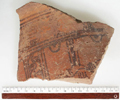
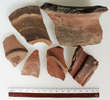
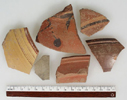
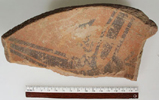
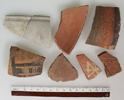
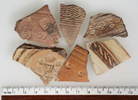
|
